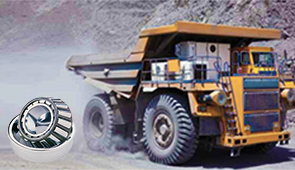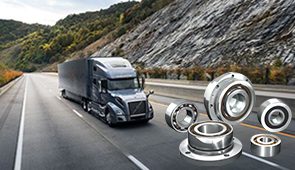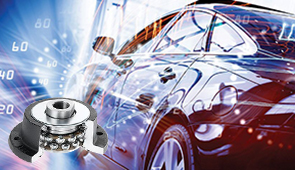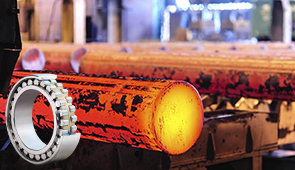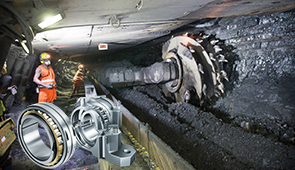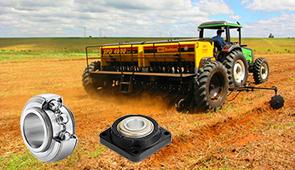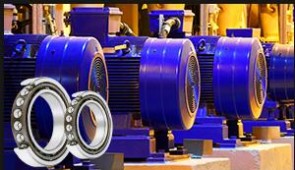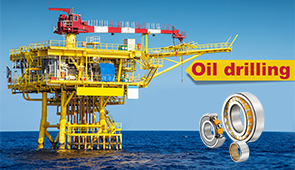Understanding Bearing Seal: Types, Functions, and Key Considerations
Bearings are critical components in a vast range of mechanical systems, enabling smooth rotation and reducing friction between moving parts. But without proper sealing, even the most efficient bearing systems can succumb to premature wear, contamination, and performance issues. Bearing seals play a pivotal role in maintaining the reliability and longevity of bearings by protecting them from external contaminants like dirt, dust, and moisture, while also retaining lubricants essential for their operation. This article provides a comprehensive guide to understanding bearing seals, exploring their various types, core functions, and essential considerations for selecting the right seal for your application.
What is a bearing seal, and why is it important?
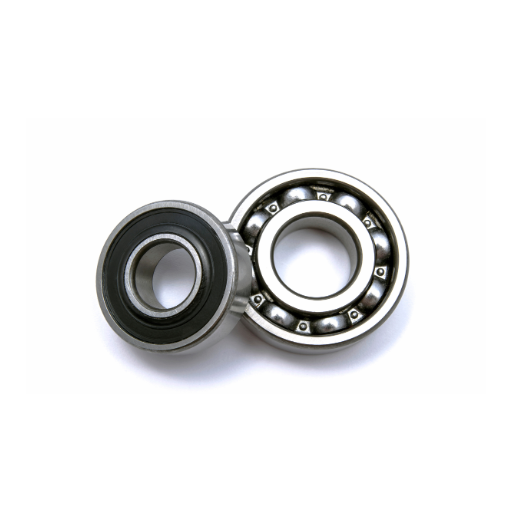
How does a bearing seal work?
The main function of bearing seals is forming a physical barrier to the internal constituents of a bearing, and the outside environment. The barrier limits the entry of the harmful contaminants such as dust, dirt, and water which could damage the bearing’s performance and life. Moreover, seals also retain lubricants within the bearing which ensures the bearing is lubricated at all times during operation, hence limiting friction and wear.
Each seal relies on different combinations of material and geometry to boost their efficacy. For instance, contact seals use non-leaking contact areas to tight seals between the lip and the rotating shaft, while non-contact ones use labyrinth features for breeze-free blockades. Incorporations of advanced designs made from PTFE, elastomers resistant to heightened operating temperatures, sped up rotational movement, or exposure to chemicals are also employed. Furthermore, modern seals feature added components, including hydrodynamic aids and integrated shielding, that make the seals perform better in specialized conditions like high-pressure environments or extreme rotations per minute (RPM).
Using precision manufacturing methods and material science, bearing seals ensure operational reliability and prolonged life of vehicles and equipment in industries as diverse as aerospace to automotive.
Why are seals primarily used in bearings?
Bearings are protected from abrasion through the use of outer seals. These seals prevent the intrusion of dust, dirt, water, and other contaminants while preserving internal parts’ performance so that sealed spaces do not get dirty. Seals avoid failure from abrasive destruction of the bearing by guaranteeing that there is no movement of counter substances like lubricant, which erodes internal parts, leading to reduced performance. Complete sealing ensures that the internal space is filled with lubricant so that the parts slide with minimal power required for rotation, resulting in less heat.
Seals need to operate effectively under extreme temperatures, high pressure, and fast-spinning shafts. Labyrinth and lip seals are designed to suit applications where strict control is required for fluid interchange. Non-contact seals require minimal wiping and thus are designed to loosely match the surface while retaining lubricant in the bearing. Furthermore, the configuration is aided by the increase in axial and radial forces, as well as exposure to the atmosphere and degree of maintenance. The use of modern engineering materials such as elastomers and polymers increases the life duration of seals, their strength, and their abrasion resistance, making them suited for harsh, demanding conditions like automotive and aerospace.
Seals improve the functionality of bearings by incorporating precise engineering and materials science, which decreases the operational halts and aids in fully utilizing productivity at various levels, ranging from intricate machinery to colossal industrial systems.
What are the key features of an effective seal?
A Seal must meet given operational criteria, which help in trusting its ability to perform tasks and its durability. Some of these features are:
- Protective Nature Of Material Used: It should not face any chemical reaction from oils, fuels, gasses, or chemicals in the system.
- Temperature Resistance: Should be able to function optimally, not only during extreme cold but also in high temperatures. Should not face deterioration.
- Wear and Abrasion Resistance: Should withstand mechanisms that may involve repetitive forceful movements.
- Pressure Endurance: The seal should also be able to withstand functional cycles, oscillatory or static, without any form of leaking.
- Flexibility and Elasticity: The seal should accommodate changes while also maintaining its mechanical strength.
- Endurance In Tough Environments: Certain cuts and industrial grade seals require dependability to ozone, harmful ultraviolent rays, and corrosive environments.
- Low Coefficients of Friction: Reducing friction leads to lower rates of consumption. This helps to slow down wear and tear on the unit placed seals leading to rise in efficiency level.
In modern complex engineering systems, ever-evolving industrial and technological advancements pose challenges in reliability, cost-effectiveness, and efficiency. In order to meet such demands, innovative materials along with fine-tuned engineering techniques obtain effective seals.
What are the different types of bearing seals?
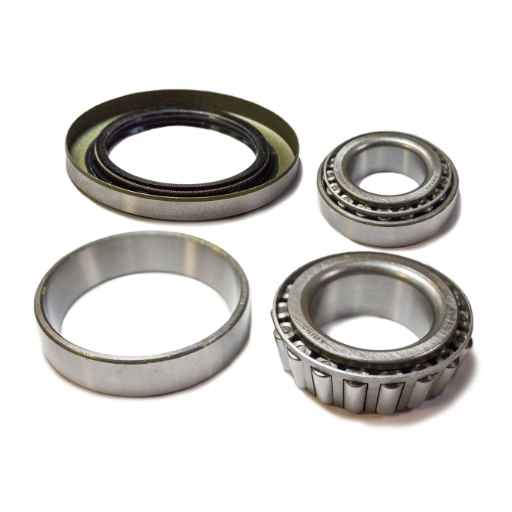
Exploring non-contact seals and their advantages
Unlike contact seals which rely on interference between sealing elements, non-contact seals use aerodynamic, hydrodynamic or magnetic fields to create a barrier seal. Non-contact seals are designed to block contamination while reducing the entrance of external particles, such as dust, moisture and dirt. Other types of non-contact seals include labyrinth seals, magnetic seals and clearance seals.
Rotating machinery tends to benefit from non-contact seals the most because of their high speeds. The life of a seal and the machine itself is greatly increased because non-contact seals do not require wear caused by friction. Without friction in the system, non-contact seals are far more efficient while reducing energy consumption. Their ability to withstand high temperatures and fluctuating pressure of industrial environments also showcases the strong heat stability that non-contact seals possess.
Innovations of non-contact seal technology incorporate high-performance polymers and composites, alongside sophisticated manufacturing processes. Non-contact seals are widely applied within aerospace, manufacturing, and energy production because of their enhanced resistance to chemicals and environmental conditions. As such, modern engineering relies on non-contact seals as a vital component to guarantee effective reliability and performance.
Understanding contact seal mechanisms
The physically moving contact between two surfaces of a seal will prevent the flow of fluid, gas, or any contaminant into or out of the device – this encapsulates how contact seals function. Contact seals can be defined as a combination of an elastomer or polymer ring that is compressed against a reciprocating or rotating surface to create a seal; this is known as flexible sealing. The mechanisms include: sealing of static units and dynamic components, andersonated shafts or pistons that slide in or out of the cylinder.
Some influential factors impacting the performance of contact seals include aspects like elasticity, hardness, thermal resistivity, pressure, temperature, and even speed at times. Material science plays an important role at least in enhancing the ability of the material to withstand extreme conditions. The use of fluoroelastomers and high-performance thermoplastics proves this point as they provide additional resistance to extreme chemical, mechanical, and temperature conditions, increasing overall durability.
New advanced precision engineering methods aid in achieving optimal surface finishes and tight tolerances which allow for minimal resistance and increased seal life. The ability to withstand wear and degradation still remain unsolved in certain cases leading to – the focus of undeclared research and development on self lubricating materials and reinforced designs to enhances the lifespan of devices operating in challenging environments.
The function of contact seals is prominent in various contact applications right from seals used in automotive engines to contact seals used in industrial machines. This denotes the significance of these contact seals in accurate systems which function seamlessly.
How do labyrinth seals function in a bearing?
Labyrinth seals function by forming a complex path that contains the ingress of contaminants like dust, dirt, and moisture while permitting only minimal egress of lubricants from the bearing assembly. Unlike contact seals, which are non-contact mechanisms, labyrinth seals use a set of interlocking grooves and ridges that create a tortuous pathway. This design considerably dampens the unrestrained flow of particles or fluids, making use of several turns or chambers to impede entrapping contaminants with the aid of centrifugal force and pressure differentials.
The sealing efficiency of labyrinth seals is determined by several factors. Some of the factors are the degree of precision machining of the dimensions of the grooves, the distance spacing of the clearance, as well as the speed, pressure, and temperature of the seal. Because of the contactless design, labyrinth seals are best suited for high-speed equipment like turbines, compressors, and industrial pumps. In addition, they help increase the efficiency of energy by giving low resistance to the rotating components.
The design of labyrinth seals has been improved with the application of CFD. Now, even flow optimization and leakage mitigation are further optimized. Modern seals also incorporate more advanced materials that strongly resist thermal degradation and other extreme conditions to boost reliability. The balance between the effectiveness of the seal and the operational lifetime of the precision machine makes the labyrinth seal one of the most important pieces in modern machinery.
How do rubber seals differ from other seal types?
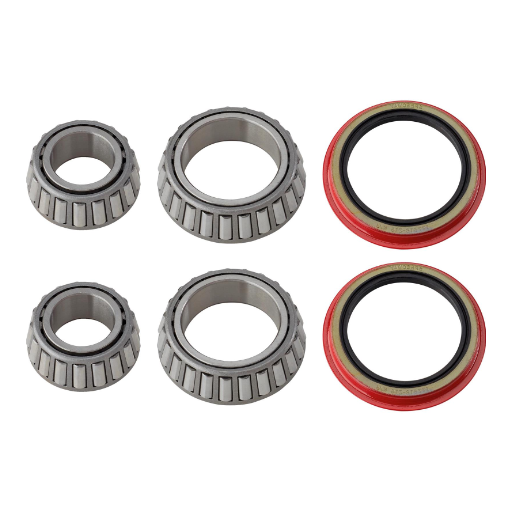
The role of synthetic rubber in bearing seals
Synthetic rubber bearing seals crises the flexibility, durability, and resistance needed for bearing seals to operate effectively. This translates into ease of movement, long-term use, and the ability to withstand a wide range of environmental factors. Unlike traditional materials, synthetic rubber compounds such as nitrile butadiene rubber (NBR), hydrocyanide nitrile butadiene rubber (HNBR), and fluorocarbon rubber (FKM) are designed with outstanding capabilities. These materials are exceedingly more resistant compared to their traditional counterparts to oil, heat, and chemicals, therefore preferring use in industrial and automotive sectors.
Customary other types of elastomers can be less advantageous as synthetic rubber has proven to be highly efficient in withstanding the most challenging temperatures in bearings and seals. FKM, for this instance, can function effectively under -13°F with features exceeding 400°F, successfully sealing under high thermal conditions. Synthetic rubber also features flexibility that enables it to adapt to the microirregular shaft surfaces, thus greatly minimizing the chances of leakage.
The Other types of elastomers also greatly increase seal wear resistance, thus providing high-grade performance even under abrasive particulates. Other modern sealing technologies now add these materials with specially designed features. The usage of synthetic rubber in bearing seals demonstrates the utmost developments in materials science that aim to enhance the durability and reliability of vital mechanical systems.
Benefits of nitrile rubber in seal construction
Nitrile rubber is a synthetic elastomer that is known for its combination of mechanical properties and chemical resistance, making it a great material for seal construction. One of its primary benefits is its excellent resistance to oils, fuels, and other petroleum-based liquids, which is critical in many automotive and industrial applications. In addition, the high degree of abrasion resistance nitrile rubber possesses greatly minimizes the wear of seals, thus extending their life in harsh environments.
NBR is known to be dependable when it comes to temperature ranging from -40°F to 250°F (-40°C to 120°C), overall, the performance doesn’t differ in extremely cold or high temperatures. NBR thermal stability is useful in hydraulic systems, or engine components where systems undergo constant temperature fluctuations. Also, through compounding, nitrile rubber can be tailored to withstand certain environmental factors, like UV rays or ozone, which increases the material’s versatility and durability.
Relating the Incorporation of Nitrile Rubber in Modern Sealing Technologies sheds light on its ease of manufacturing. This causes cost-effective production while maintaining quality standards. Moreover, its maintenance under stress and compatibility with reinforcing fillers or modifiers allows for custom-designed solutions to meet specific, tailored sealing demands. All in all, nitrile rubber is a pivotal material concerning the improvement of sealing effectiveness and efficiency, thereby supporting the development of high-performance sealing systems.
How to choose the right bearing seal type for your needs?
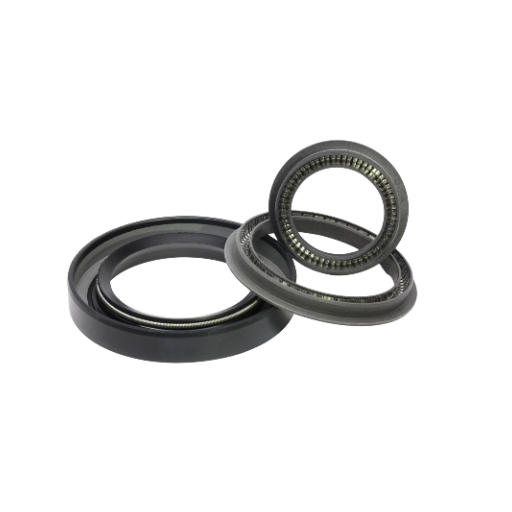
Factors affecting the choice of bearing seal
To get ideal performance and longevity from a bearing seal, optimizing the type of bearing seal requires careful consideration of multiple factors, which include:
- Operating Environment: The surrounding conditions, like temperature, humidity, and the extent to which the elements, as well as contamination, are corrosive, have a major influence on the design of the seal bearing. The environment that is harsh and is likely to get contaminated needs seals with extreme chemical resistance.
- Rotational Speed and Lubrication: the speed of the bearing influences the design of the seal. Higher operating speeds cause more friction and heat. Seals have to be aligned to the systems speed rating to minimize wear while keeping the lubrication preserved. For example, lower friction seals are suspended in high speed applications.
- Load Bearing: With these a heavy axial or radial load is applied. Such an application requires a seal that is deformation resistant and harsh. Specially engineered seals that are designed for high pressure environments where there is high stress and risk of lubricant leakage need to be applied.
- Seal Material Properties: The compatibility of seal material with the lubricant and the fluids used in the operations is critical. Nitrile rubbers and fluoroelastomers, as well as polytetrafluoroethylene (PTFE), provide differing amounts of flexibility, thermal tolerance, and chemical resistance which can be tailored to specific demands.
- Maintenance and Service Life: Maintenance periodicity about the seal’s life expectancy should be in the same context as the bearing system’s operating cycle. Self-lubricated seals or maintenance-free structures tend to save time and money in situations where frequent servicing is difficult.
- Application-Specific Requirements: Other rotary seals are specified by industry standards documents or specialized intricacies, so additional requirements define seal selection, such as in aerospace, automotive or heavy industrial seal applications. These criteria guarantee the seal operates under extreme conditions while maintaining safety.
Considering rigorous performance requirements and these factors together allows optimization of operational efficiency and risks alongside system reliability with careful selection of bearing seals.
Comparing the effectiveness of metal shields vs. rubber seals
In a bearing application, metal shields and rubber seals differ from one another in bearing their protective attributes and functional traits. Metal shields offer protection against larger contaminants such as dust and debris with minimal burdening friction during high-speed operations. Their construction does not provide sufficient sealing against fine particulates or liquid ingress, which makes them ineffective for moisture or chemical environments.
Rubber seals, commonly employed elastomers such as nitrile or Viton does seal finely against particles, liquids and various contaminants. Their flexibility ensures tighter barrier making them ideal for enhancing environmental protection. However, they pose increased friction and reduced maximum operating speeds compared to metal shields. Moreover, the choice of material for rubber seals is crucial due to the need to withstand certain chemicals and temperatures for specific applications.
The decision between metal shields and rubber seals highly depends on the specific application rather than the choice of the seal itself. Features such as the operating speed, the environment of use, and the possibility of contamination hazards influence the selection. For example, the performance of electric motors and other precision machines at high speeds, needing accuracy, might utilize the advantage provided by metal shields regarding drag on the motor. However, more robust equipment, such as heavy industrial rubber-sealed equipment or machines working under harsher conditions, often requires durable sealing capabilities.
How does a seal’s design prevent leakage and contamination?
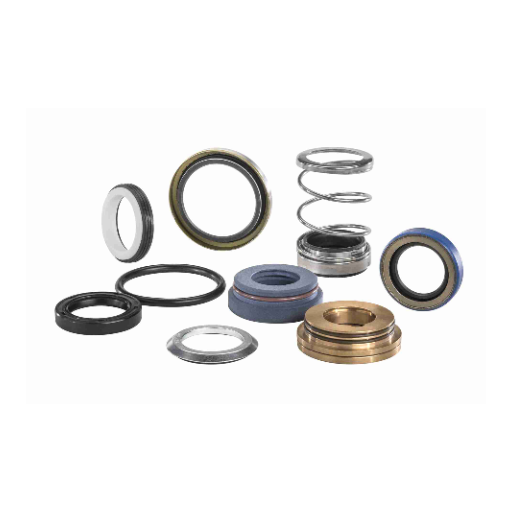
Methods for preventing contaminants from entering the bearing
Practical sealing solutions have an important part to play in minimizing contamination and increasing the longevity and reliability of bearings in industrial applications.
- Lip Seals: Lip seals, are mainly used to prevent contamination by dust, dirt, or moisture while allowing a thin layer of lubricant to pass through. Flexible elastomer lips in contact with the shaft act as lip seals and prevent external contamination. Some sophisticated designs make use of multiple sealing lips to provide better sealing.
- Labyrinth Seals: Labyrinth seals utilize non-contact protective covering consisting of elaborate channels and grooves. The convoluted design blocks contaminants reducing their access to the bearing. This design feature makes it appropriate for high speed applications where friction is to be avoided while still ensuring adequate debris blocking.
- Shielded Bearings: Shields which are usually metallic or polymer in nature are incorporated into the bearing design to reduce the influx of particles, dirt, and liquids into the bearing. As compared to seals, shields do not contact the inner race which reduces frictional losses. This is often used in places needing moderate contamination protection coupled with low drag.
- Positive Pressure Systems: When paired with a bearing housing, positive pressure systems create outward airflow, effectively blocking contaminants from entering. This method is particularly helpful in dusty or particulate-laden environments, such as construction or manufacturing plants.
- Grease as a Barrier: Properly filling bearings with grease acts as an additional seal, creating a protective barrier that keeps contaminants out. Grease replenishment also assures that any particulates would be purged as new grease is supplied, pushing contaminants outward.
Through extensive optimization of materials and designs, industrial engineers can reduce contamination operational threats by integrating these sealing techniques. Bearings that can function in extreme environments are being developed through computational models which refine bearing solutions in order to enhance overall efficiency and longevity of machines.
Strategies to minimize leakage in bearing seals
A combination of material engineering, geometric optimization, and advanced monitoring technologies must work in unison to reduce leakage in the bearing seal efficiently. Seal material selection is important; durable elastomers like nitrile rubber and fluoropolymer are commonly used for high temperature and chemical processes. Material choice must always align with the operating environment, which includes temperature range, lubricant type, and contamination level for the seals.
Adding labyrinth seals or hydrodynamic features into the geometry of the seal improves fluid diversion and retention capabilities. Adequate seal lip pressure is attained via meticulous engineering and springs, ensuring contact with the shaft to minimize leaky gaps. Furthermore, surface finishes of the shaft are critical: an overly rough finish will wear the seal, while an excessively smooth one will not retain lubricant.
The performance of seals is improved by technology. Increasingly sophisticated systems are being employed to track temperature changes and pressure differentials in a bearing assembly. Such systems can measure and provide real-time data on possible leakage, enabling preemptive actions to be undertaken. Advanced numerical techniques such as Computational Fluid Dynamics (CFD) modeling also assist in the development phase design optimization by predicting seal performance across several operational conditions.
The reduction of bearing seal leakage is possible through the application of carefully selected materials, specially engineered tools, precision diagnostics, and multidisciplinary approaches. This ensures dependability in operations and longevity of vital parts.
Frequently Asked Questions (FAQs)
Q: What are the primary functions of bearing seals?
A: Bearing seals are primarily designed to protect bearings from contaminants and retain lubricant, such as oil or grease, within the bearing. They act as a barrier to prevent dirt, moisture, and other particles from entering, thus ensuring optimal bearing operation and extending bearing service life.
Q: What are the different types of seals used in bearings?
A: There are several types of seals used in bearings, including rubber seals on both sides (2RS), low friction seals (LLU), contact seals (DDU), and non-contact seals (ZZ). Each type is designed to meet specific bearing specifications and applications.
Q: How does the seal affect bearing life?
A: The appropriate bearing seal enhances bearing life by preventing contamination and ensuring proper lubrication. Seals that effectively block contaminants and retain lubricant contribute to an extended bearing service life and optimal performance.
Q: What is the difference between contact and non-contact seals?
A: Contact seals, like DDU, make direct contact with the bearing’s inner ring, providing superior sealing against contaminants, but may increase friction. Non-contact seals, such as ZZ, create a small gap between the seal and the inner ring, reducing friction and heat generation but offering less protection against contaminants.
Q: How do I choose the appropriate bearing seal for my application?
A: Choosing the appropriate bearing seal involves considering factors like the operating environment, speed, temperature, and the need for protection against contaminants.
Q: What role do PTFE seals play in bearings?
A: PTFE seals are a type of advanced sealing solution that offers low friction and high resistance to chemicals and extreme temperatures. These seals are commonly used in applications where standard rubber seals may not provide adequate performance, ensuring the bearing operates efficiently under challenging conditions.
Q: How can seals prevent corrosion in bearings?
A: Seals act as a barrier to prevent moisture and other corrosive elements from entering the bearing. This protection is crucial in corrosive environments, where seals help maintain proper lubrication and shield the inner and outer rings from rust and degradation.
Q: How does proper lubrication interact with bearing seals to ensure optimal performance?
A: Proper lubrication is crucial for reducing friction and wear in bearings. Seals help retain the lubricant within the bearing, preventing leakage and contamination. This collaboration between lubrication and sealing ensures the bearing operates smoothly, reducing heat generation and extending service life.
UCTH213-40J-300 with Setscrew(inch)
CNSORDERNO: Normal-duty(2)
TOGN: UCTH213-40J-300
SDI: B-R1/8
SD: 2 1/2
UCTH212-39J-300 with Setscrew(inch)
CNSORDERNO: Normal-duty(2)
TOGN: UCTH212-39J-300
SDI: B-R1/8
SD: 2 7/16
UCTH212-38J-300 with Setscrew(inch)
CNSORDERNO: Normal-duty(2)
TOGN: UCTH212-38J-300
SDI: B-R1/8
SD: 2 3/8
UCTH212-36J-300 with Setscrew(inch)
CNSORDERNO: Normal-duty(2)
TOGN: UCTH212-36J-300
SDI: B-R1/8
SD: 2 1/4
UCTH211-35J-300 with Setscrew(inch)
CNSORDERNO: Normal-duty(2)
TOGN: UCTH211-35J-300
SDI: B-R1/8
SD: 2 3/16
UCTH211-34J-300 with Setscrew(inch)
CNSORDERNO: Normal-duty(2)
TOGN: UCTH211-34J-300
SDI: B-R1/8
SD: 2 1/8









